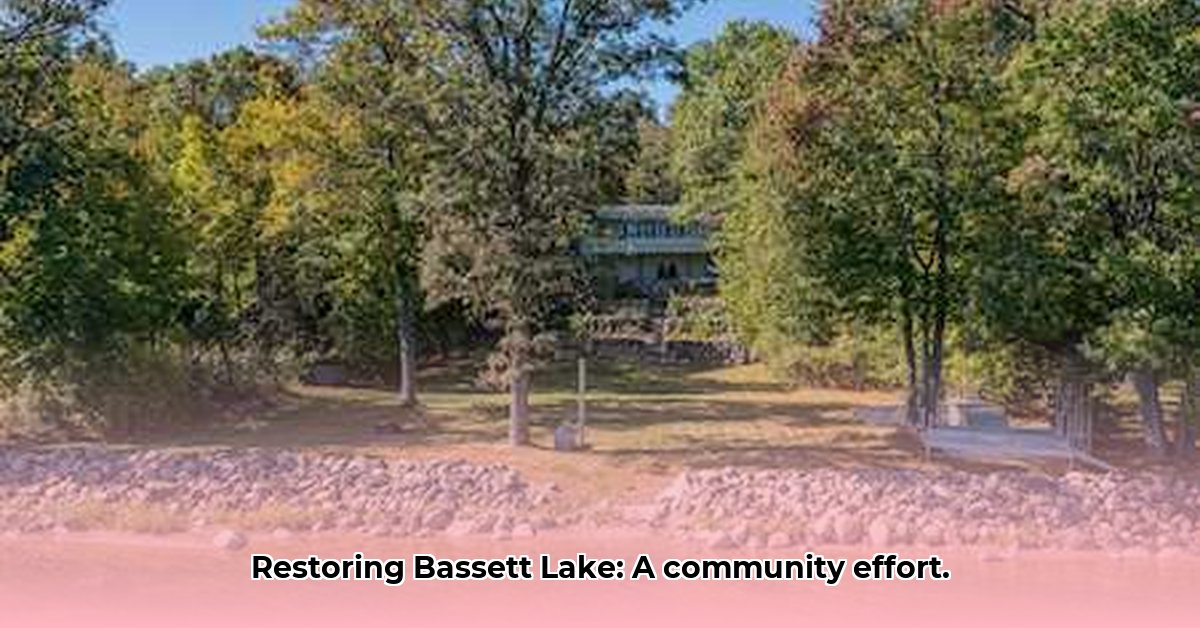
A Legacy of Industry and Environmental Concerns
Bassett Lake, Minnesota, presents a compelling case study in ecological restoration. Its history—forged not in natural processes but as a tailings pond from mining operations—has left a lasting impact. This legacy of industrial activity has resulted in a lake struggling with declining water levels, ecological imbalances, and limited recreational access. But the story of Bassett Lake is not merely one of decline; it's also a testament to the potential for collaborative action and environmental revitalization. The question is: can this once-damaged ecosystem be brought back to life? The answer, as we will see, lies in a comprehensive, multi-stakeholder approach.
The Challenges Facing Bassett Lake: A Delicate Ecosystem in Distress
The relatively small size of Bassett Lake (77 acres) and its shallow average depth (five feet) make it exceedingly vulnerable. This small size and limited water volume magnify the impact of environmental stressors. The degradation of Tailings Creek, a crucial water source, further exacerbates the water level depletion, creating a situation akin to a leaky bathtub struggling to retain its water. How can we stem this decline? This question necessitates addressing a convergence of interdependent issues including significant water loss, invasive species, and diminished biodiversity.
Invasive species, unchecked, outcompete native flora and fauna, leading to a notable reduction in biodiversity. Past attempts at invasive species control using chemical treatments, while demonstrating some short-term success, highlight the need for careful ongoing monitoring and research to fully understand their long-term ecological impacts. The unknown long-term consequences of past mitigation efforts underline the urgency of a scientifically-informed and adaptive restoration plan. Further complicating matters is the lack of adequate recreational infrastructure, limiting access and hindering the potential for economic development linked to recreational use. Is the dream of a vibrant, thriving Bassett Lake an unrealistic aspiration? We believe not.
Who's On Board? A Collaborative Approach to Restoration
Restoring Bassett Lake requires a collaborative effort involving multiple stakeholders, each with distinct responsibilities and contributions. Effective restoration necessitates a unified strategy and coordinated actions. The success of this endeavor depends on the active participation of all involved parties. The following table details the roles and responsibilities of key stakeholders:
| Stakeholder | Short-Term Actions | Long-Term Actions |
|---|---|---|
| Kennecott Copper Corporation | Assess water quality; explore alternative water sources for the lake. | Develop a comprehensive, long-term water management plan; investigate innovative methods for managing tailings. |
| Nevada Department of Wildlife (NDOW) | Closely monitor water levels and fish populations; conduct ecological impact assessments. | Conduct thorough research into the causes of low water levels; establish a partnership to restore Tailings Creek. |
| Local Community & Recreation Users | Advocate for improved boat launch access; encourage responsible recreation. | Create a sustainable recreation plan; explore opportunities for eco-tourism that benefits both the community and the lake. |
| State & Local Government Agencies | Secure funding for restoration projects and infrastructure improvements. | Enact and enforce regulations to protect water quality and prevent further environmental harm; support collaborative restoration efforts. |
Charting a Course for Recovery: Proposed Solutions
A multi-pronged approach is critical for Bassett Lake's restoration. The solutions necessitate tackling water management, ecological rehabilitation, and sustainable recreation development concurrently and collaboratively. The following steps outline a pathway to recovery:
Strategic Water Management: Diversifying water sources, improving Tailings Creek's health, and implementing water conservation strategies are paramount. This might involve exploring groundwater replenishment or managed water transfers, combined with the development and implementation of cost-effective water conservation schemes. Is this challenge insurmountable? No. Practical strategies, combined with innovative technology, can offer viable solutions.
Ecological Rehabilitation: Regular ecosystem monitoring, targeted restoration efforts focused on reintroducing native species, and the effective management of invasive species are critical. This also includes careful consideration of the long-term impacts of past mitigation strategies. Can we restore biodiversity? Yes, through a combination of careful species reintroduction and ongoing monitoring.
Sustainable Recreation Development: Investment in improved infrastructure—boat launches, restrooms, and clear signage—will increase recreational use while simultaneously promoting responsible behavior to protect the lake's ecosystem. Eco-tourism initiatives can generate economic benefits without compromising the lake's health. Can balanced recreation and ecological protection coexist? Yes, through careful planning and community engagement.
A Call to Action: Securing Bassett Lake's Future
The restoration of Bassett Lake is not simply an environmental imperative; it's a community-building endeavor. It demands a long-term commitment from each stakeholder, fostering a collaborative spirit essential for success. The future prosperity of Bassett Lake is contingent upon the collective actions of Kennecott, NDOW, the local community, and government agencies. Together, we can ensure that Bassett Lake does not just survive, but thrives.
Assessing the Risks: A Framework for Action
Proactive risk management is crucial to navigating the challenges. The following matrix assesses key risks and outlines mitigation strategies:
| Risk Factor | Likelihood | Impact | Mitigation Strategy |
|---|---|---|---|
| Ongoing Water Level Decline | High | Very High | Diversify water sources; implement strict water conservation measures; investigate water augmentation techniques. |
| Ecological Damage | Medium | Very High | Implement regular monitoring programs; prioritize targeted restoration efforts; manage invasive species effectively. |
| Limited Recreation Access | High | Medium | Improve existing and create new infrastructure; promote responsible recreation; develop eco-tourism opportunities. |
| Insufficient Funding | Medium | High | Secure grants and funding from various sources; encourage public-private partnerships to foster financial sustainability. |
The revitalization of Bassett Lake represents more than just ecological restoration; it symbolizes a community's commitment to environmental stewardship and sustainable development. Its successful restoration serves as a model for collaborative environmental action.